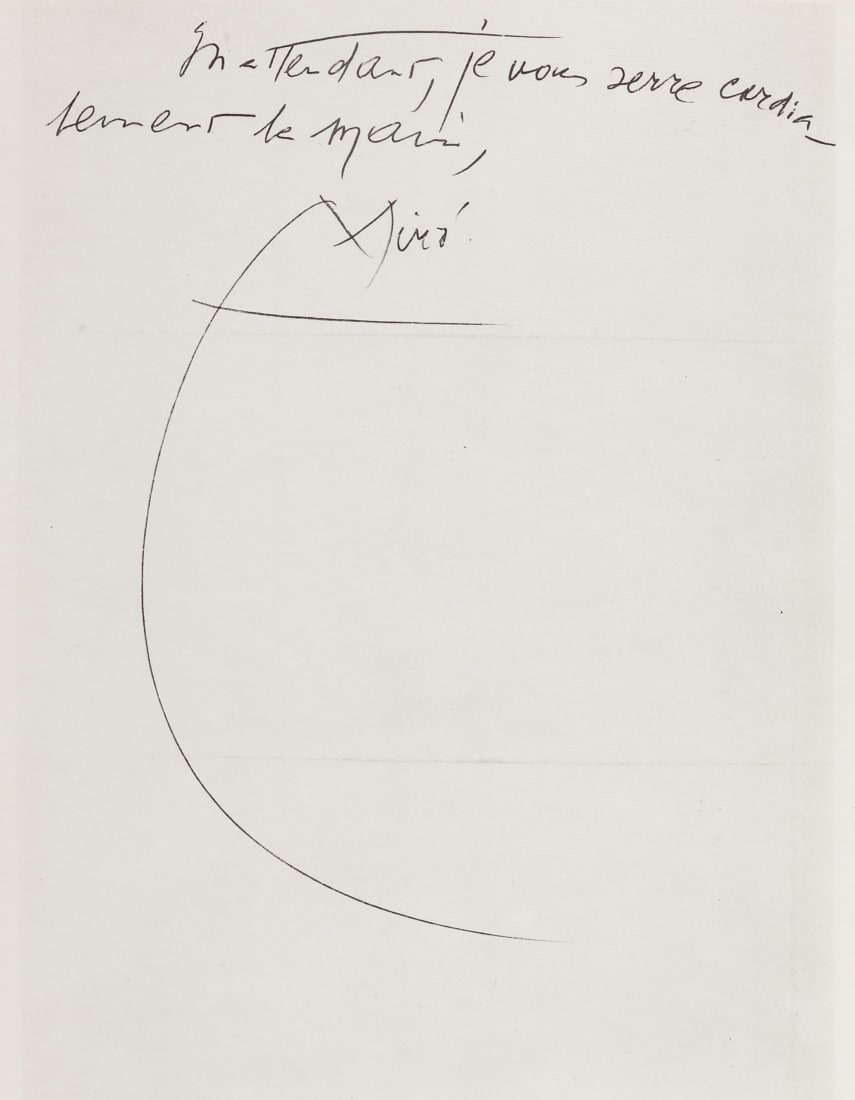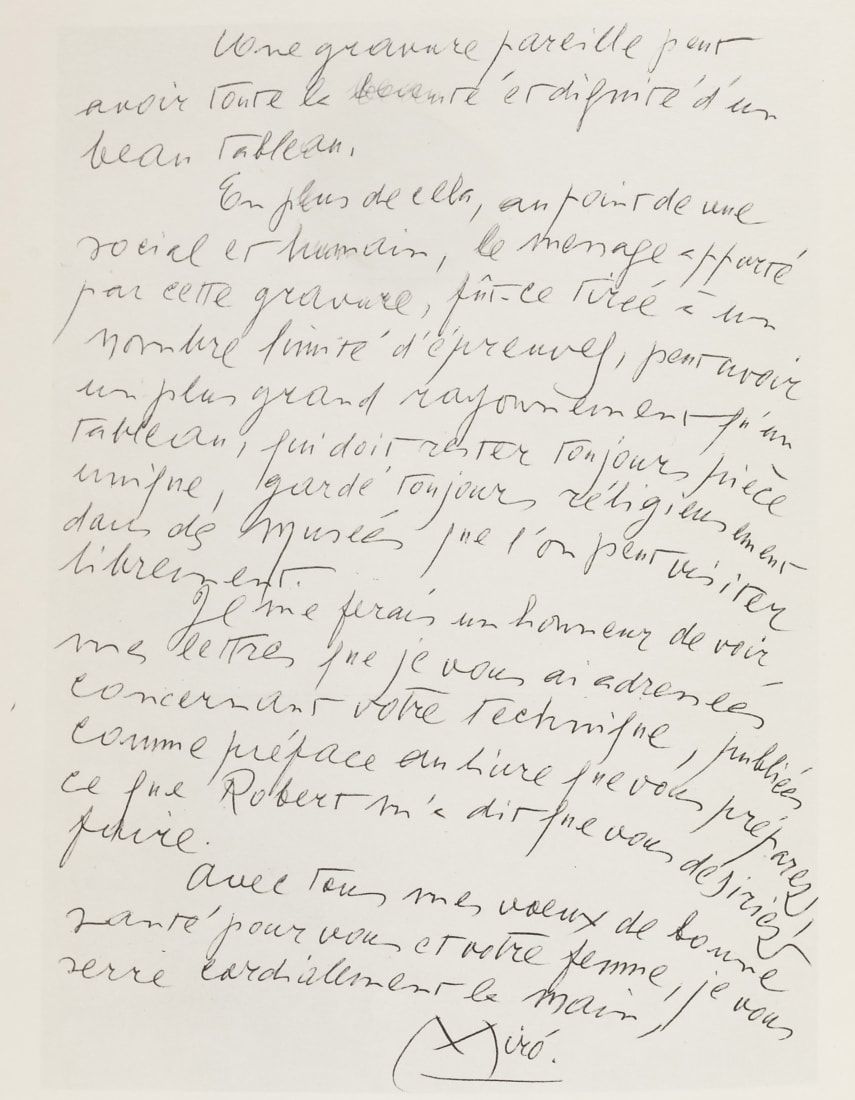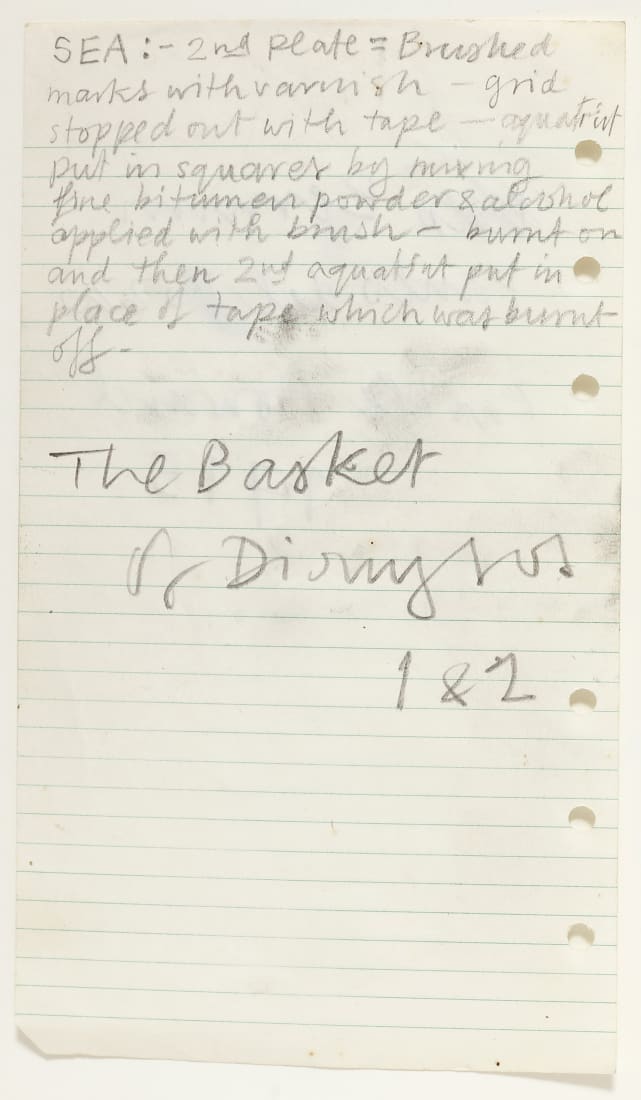The Printed Brushstroke
This Online Viewing Room explores the legacy of graphic works made using carborundum, a groundbreaking printmaking technique pioneered by Joe Tilson in the UK, that went on to be employed by some of the greatest artists of the past fifty years.
Our exhibition Joe Tilson: Breaking the Rules is open at the gallery until 17 June 2023.
Carborundum is the common name for silicon carbide. Silicon carbide is a compound that can be ground into a coarse or fine powder and mixed with a PVA glue to create a malleable paste. This paste is then applied onto a printing plate, with a paintbrush or by hand, and inked. When dampened paper is placed on top of the worked plate and both are put through an etching press, the ink is transferred, and the relief areas emboss the paper surface.
Joe Tilson with printer Giorgio Upiglio at Grafica Uno in Milan, 1977
In the 1960s artist Henri Goetz (1909 - 1989) invented the carborundum technique and introduced it to several artists, most notably Joan Miró (1893 - 1983) in 1967. The technique provided a breakthrough for Miró’s graphic work. The artist discovered that by combining this new technique with other etching methods he could express himself with more richness and freedom. He stated, “such an engraving can have all the beauty and potential of a fine painting.” Following this development Miró devoted himself primarily to printmaking in the final decade of his life.
Goetz published a treatise entitled La gravure au carborundum, prefaced by Miró in 1968. In this treatise Goetz describes the principles of the technique and how carborundum can be made and applied. Goetz introduced the method to Tilson in 1979. Tilson returned to England with instructions and began to experiment with carborundum, showing it to his printer Jack Shirreff. Spurred on by Tilson’s enthusiasm, Shirreff became a master of carborundum printmaking. Over the next 30 years he worked with some of the greatest British artists to make carborundum prints that are now housed in museums across the world.
In the late 1980s Shirreff made the acquaintance of Howard Hodgkin (1932 – 2017). Hodgkin was impressed with the simple and direct method of carborundum and its painterly quality. Able to apply colour directly with a brush, he described the method as “marvelously liberating”. As time passed printmaking became a weapon in Hodgkin’s armory that equaled his achievements in painting. His use of carborundum permeated his graphic work for the rest of his life and was used to make the marks in his final print series, After All, completed several months before his death.
Printing carborundum works by Howard Hodgkin at 107 Workshop, Wiltshire, 2009
In the 1990s Cristea Roberts Gallery approached Gillian Ayres (1930 – 2018), who was best known for her vibrant, heavily worked canvases, to make prints with Shirreff. She completed her first project in 1999, a series of three multi-coloured carborundum etchings. Using carborundum allowed Ayres to make prints that were close in language and texture to her paintings. From this first group of graphic works, Ayres went on to become a dedicated printmaker for the rest of her life.
Gillian Ayres hand-painting plates at 107 Workshop, Wiltshire, 2010
Richard Long (b. 1945) made his most ambitious editions to date in 2015 after Cristea Roberts Gallery approached the artist with the idea of making carborundum prints. He made a body of seventeen extraordinary large-scale prints with printer Andrew Smith, who assisted Jack Shirreff for over twenty years before setting up his own print workshop.
Exploring new and different ways to work with carborundum, Long propped plates vertically against a wall, enabling him to work fast at the top of the plates, generating cascading ‘out-takes’ of streaks and splashes. Long also laid plates on the floor and covered them with paste using his hands, replicating the technique he uses when making his mud works. The resulting labyrinthine shapes record the trace of his body movement and gestures.
Whether in the brilliant splashes of colour, the fresh directness of brushstrokes or piercing lines, carborundum printmaking has brought a new and remarkable freedom to artists, who continue to drive the technique forward.
Images of letters and notes © Joe Tilson
Gillian Ayres at 107 Workshop. Courtesy Estate of Gillian Ayres and Cristea Roberts Gallery. Photo: Andrew Smith
Printing carborundum works by Howard Hodgkin at 107 Workshop. Courtesy Estate of Howard Hodgkin and Cristea Roberts Gallery. Photo: Andrew Smith












